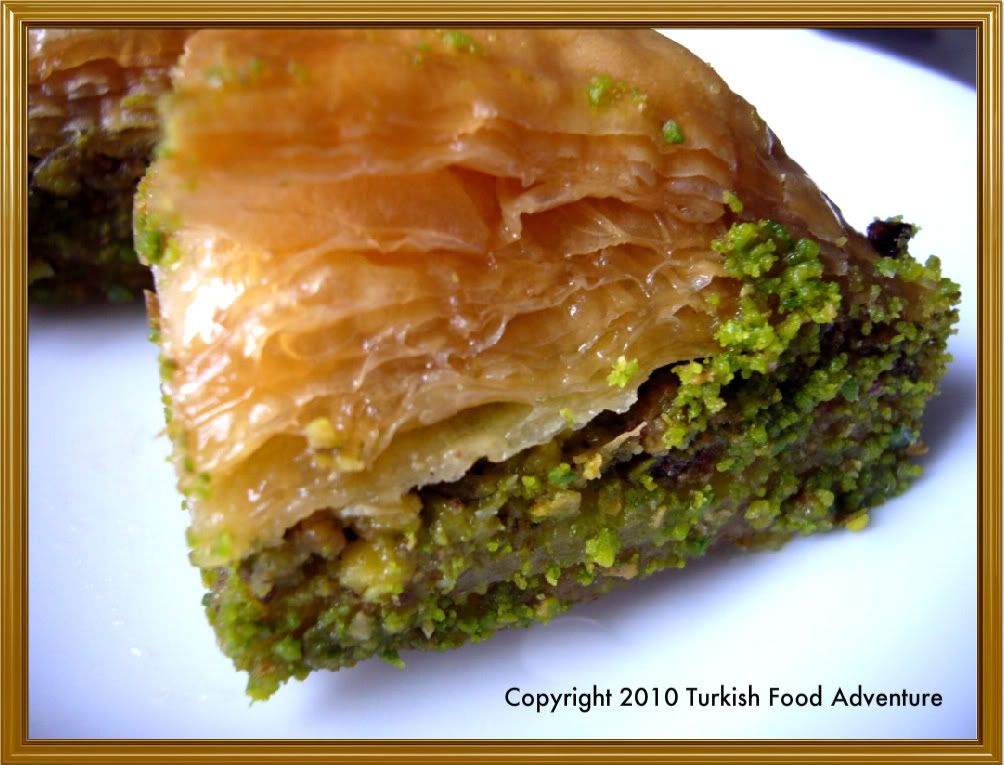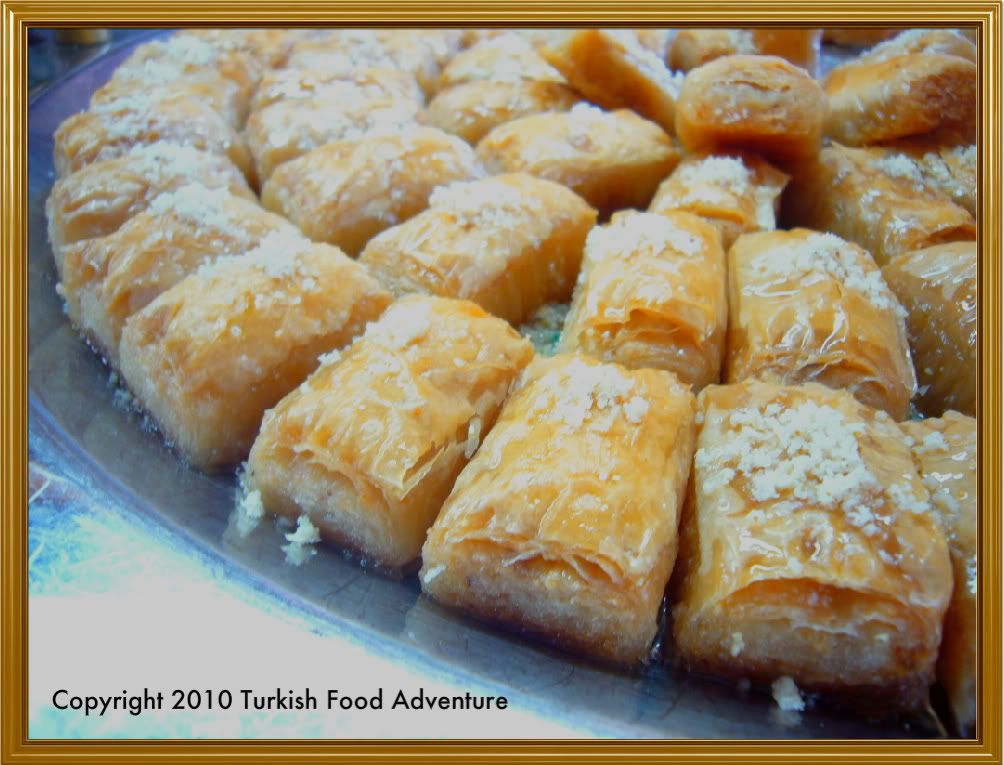Baklava is not just any dessert. It's almost like a symbol of the Turks' love for sweets.
This layered flaky delicacy is usually made of extremely thin sheets of pastry and brushed with melted butter. As the layers of thin pastry are stacked, it is then filled with either chopped pistachios (called antep fıstıklığı baklava in Turkish) or with chopped walnuts (cevizliği baklava) - also sometimes referred to as ev baklavası, meaning homemade baklava. Its then baked in the oven and soaked in warm lemony and sweet syrup.
Throughout the years, many variations of making baklava has been made. There are baklavas made with very thin phyllo sheets usually available in the markets so people can easily prepare baklava at home. Some baklavas are filled with hazelnuts or a combination of pistachios and walnuts and or filled with heavy cream.
No matter which way baklava is made or what it consist of, its mouth-watering sweetness and its gentle slight crunch to every bite has long become not just a favorite to the Turkish people but also a common favorite to most of the tourists visiting Turkey.
In Turkey, the city of Gaziantep is popularly known to be the native home of baklava. This is where the Turkish patent office registered a geographical indication certificate for Antep Baklava in 2008.







